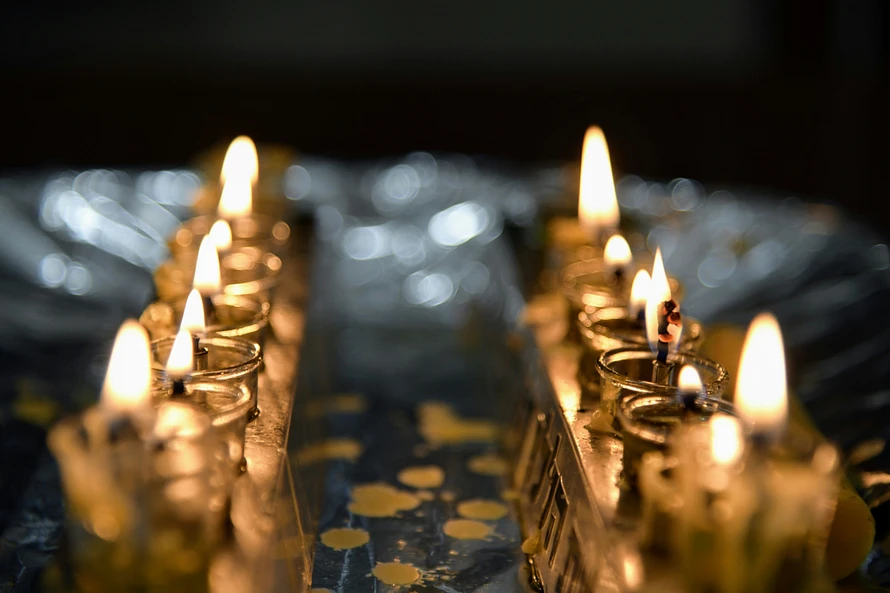Faith and Dance: Spiritual Journeys in Between Worlds
I started questioning the existence of God when I was a teen. Growing up in Catholic and Anglican schools showed me what believing in God might look like. But over time, I read books on other possibilities. Other religions, philosophy, and general spirituality showed me that believing in God—if one believed in such a being—had difference faces. With my first young adult series, Between Worlds, I wanted to offer young readers a chance to explore their spirituality in the privacy of a young adult series of books.
What Does Spiritual Journey Mean to the Reader?

You may associate “spiritual” with a belief in one or (many) more higher powers, whether a god, many gods, or many spirits.
The generally accepted opposite of “spiritual” is often “empirical,” i.e., a belief in science, which does not support a belief in an unproven higher power.
As a teen, I was torn between both: raised Catholic, but attending school in Ontario, I thought both sides conflicted with one another.
I’ve since learned that spirituality can mean many things and need not exclude science.
What Spiritual Means to Me
Spirituality is an abstract concept: We can neither hold it nor see it, hear it nor taste it nor smell it.
Yet it still exists. How? Why?
Humans cannot live alone, despite what many may wish to believe. Someone makes our clothes. In most cases, someone grows our food. How clean our air is depends on how clean our neighbours—whether directly beside us or on the other side of a border—keep their air.
The noise or silence we experience is connected to others, too.
How do we honour these connections? How do we feel about them? How do we become a part of them?
There’s no one answer to these questions. That’s why I created a series with two teenaged girls whose spiritual lives differ vastly from one another.
Elisabeth’s Spiritual Journey
In Between Worlds, Elisabeth’s journey is perhaps the more expected one. She navigates her beliefs and relationships, seeking to understand where Jesus is present in her life. Whom should she turn to for guidance? Jesus, God, her parents, the minister, or her own heart?
Elisabeth cannot fathom a world without a god, even as she tries to reconcile how a loving god could allow what eventually became known as World War I to happen.
For Elisabeth, following her Lutheran faith means both following the rules and participating in the community:
· Church called everyone together once a week.
· Social traditions formed out of aspects of religious life.
· Life’s greatest moments, from birth to death, were celebrated together.
Believing in God meant both following a moral compass to get into heaven and learning how to co-exist with one another. Many of us today may not agree with some of the rules that were imposed on Elisabeth’s’ community for this coexistence to happen, but it happened nonetheless.
Juliana’s Spiritual Journey
If spirituality is about connecting with others while developing a deeper relationship with yourself, then dance is that spiritual journey for Juliana. Indeed, the first novel ends with her dancing as she gathers courage to tackle this latest chapter in her life.
Many adults today will shy away from dancing: “Oh, no, thank you. I’m going to sit down. I can’t dance.”
However, dance is community. What’s a wedding without dancing? Teenaged life without the high school dance? Rock concerts without dancers onstage? Some forms of theatre without dance?
Dance, for Juliana, takes that to a different level. As a teenager in love with dance—especially the percussion form that is tap dance—she finds connection with those around her. The transition to a new dance studio presents many problems for Juliana, including not understanding the social rules of this new group.
Juliana doesn’t pray in the religious sense of the word. Instead, she tries to deepen her relationship with herself and find answers to her problems through dance.
Spirituality Your Own Way
Most youth will embark on some kind of spiritual journey. It may only begin in their pre-teen years and take decades to conclude. Or perhaps they learn in those younger years that what they have always believed is what provides them the strength to continue in this world.
Spirituality carries a diverse range of meanings, and I wanted to write a series for pre-teens and teens that could help them work through that journey in the privacy of a book. For more information about Between Worlds, visit here.